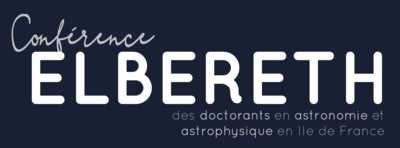Orateur
Description
Binary neutron star mergers offer a new and independent means of measuring the Hubble constant by combining the gravitational-wave-inferred source luminosity distance with its redshift obtained from electromagnetic follow-up. This method is limited by intrinsic degeneracy between the system distance and orbital inclination in the gravitational-wave signal. Observing the afterglow counterpart to a merger can further constrain the inclination angle, allowing this degeneracy to be partially lifted and improving the measurement of $H_0$. In the case of the binary neutron star merger GW170817, afterglow light-curve and imagery modeling thus allowed to improve the $H_0$ measurement by a factor of 3. However, systematic access to afterglow data is far from guaranteed. I will present models for emission and detection of gravitational-wave and electromagnetic radiation from binary neutron star mergers and realistic source population models. With these models, I will quantify whether afterglows will play a leading role in multimessenger cosmology, or whether they will be too rare to significantly contribute to the narrowing-down of the Hubble constant.
Day constaints
Monday, Tuesday, Wednesday, Thursday, Friday
| Field | Cosmology |
|---|

